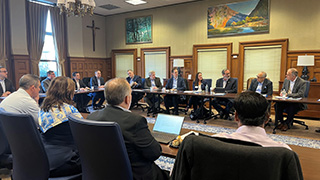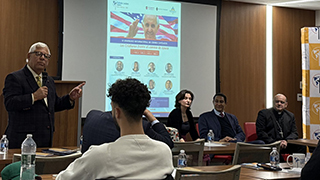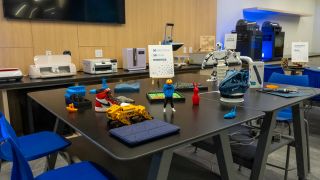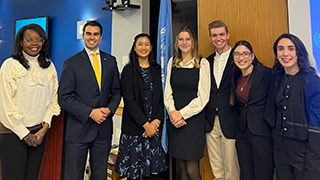Peter Morse and M.S. in Applied Physics and Engineering: Shaping the Future of STEM Innovation
Thursday, October 23, 2025
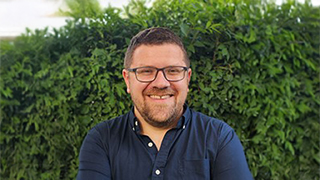
Peter Morse, Ph.D. Assistant Professor of Physics, Department of Physics
Peter Morse, Ph.D., Assistant Professor of Physics in the College of Arts and Sciences, has recently contributed to the global scientific community. He co-authored a chapter in the Royal Society of Chemistry’s book Packing Problems in Soft Matter Physics: Fundamentals and Applications. This publication brings together some of the brightest minds in the field, including Morse’s chapter, titled “Amorphous Packings of Spheres.” As Morse says, “The chapter that I wrote was an invited chapter, the work that I was doing with my previous advisor at Duke University, we had sort of been pushing on this.”
Morse’s research focuses on computational and theoretical soft matter: an area that lies at the intersection between physics, chemistry, biology, computer science and pure mathematics. His group studies the glass and jamming transitions, packing problems, hard sphere crystallization, properties of mean field glasses, the relationship between structure and dynamics, the formation of material memory, rheology, hyperuniformity and computational geometry.
Looking ahead, Morse’s research continues to evolve. He is currently exploring new constraints in system behavior with his students at Seton Hall. As he puts it, “We’re studying how systems form structures, and asking what happens if we further constrain this problem.” His passion for tackling complex problems shines through, as he works alongside his Seton Hall students to push the boundaries of current knowledge.
This spirit of exploration carries directly into his lab, where research and learning go hand in hand, shaping the lab experience for students. Those who join Morse’s lab learn to code in Python and C++, as well as to use a high-performance computing cluster. They work with standard minimization and thermalization algorithms in a homebuilt Python package, and students interested in algorithmic development also help optimize code and develop new functionality.
Moreover, Morse’s mentorship philosophy extends beyond technical skills; it’s about nurturing curiosity and passion. He shares valuable advice for students: “Follow the problems that are interesting to you, break them down piece by piece, and try to apply what you’re learning to solve them.” He encourages his students to think creatively, to “re-ask the questions,” and to explore new avenues. This mindset of curiosity and innovation is what drives Morse’s own research and shapes the next generation of physicists fostered at Seton Hall.
Seton Hall’s M.S. in Applied Physics and Engineering Program, offered in the College of Arts and Sciences, benefits from exceptional faculty members like Morse. This STEM-designated, 30-credit program combines advanced applied physics with engineering fields. The degree is designed to help students excel in the 21st century STEM workforce. Students will complete 12 credits of required foundational courses in physics, 10 credits of electives and 8 credits of research focused on a concentration in Applied Physics, Engineering Physics, or Material Science and Engineering. With Seton Hall’s proximity to New York’s industries and partnerships with leaders like Bristol Myers Squibb, this M.S. program provides unmatched career opportunities. Graduates are well-positioned to thrive in high-growth industries such as aerospace, energy, material science and nanotechnology, where the demand for professionals in applied physics and engineering has never been higher.
In this thriving academic community, Morse’s invitation from the Royal Society of Chemistry reflects the program’s growing global reach. The Royal Society of Chemistry, which traces its origins back to 1841 and was officially formed in 1980, is one of the world’s leading scientific organizations. Based in the United Kingdom, it supports the global chemical sciences by promoting research and innovation. With a reputation for publishing cutting-edge research, the Royal Society of Chemistry invited Morse to share his insights on amorphous materials. Reflecting on this honor, he says, “It was a great honor to be included in this work, and having Corey O'Hern from Yale University, whose work in this field is considered to be of the highest level, ask us to put together this chapter was an even greater privilege.”
The chapter serves as both a review of the last two decades of research on amorphous systems, and a forward-looking exploration of how such materials can be manipulated and applied. These substances, such as sand and glass, lack a clear internal structure but exhibit unique properties under certain conditions. “We would like to discuss how these systems form, and how they exhibit memory of their previous states,” Morse explains. His work in this area has wide-ranging applications, from material science to industrial applications.
Categories: Nation and World, Science and Technology


